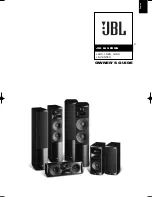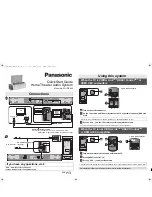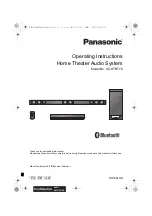
CROSSOVER FILTERS
The crossover frequencies of the
active crossover network are 420
Hz and 4 kHz. In order to reach
uniform frequency balance in
different acoustic conditions,
special calibrated controls are
included in the crossover. The
Bass, Midrange and Treble level
controls operate in 1 dB steps.
Moreover, the low frequency Tilt-
and Roll-off controls both have
four 2 dB steps to allow refined
LF response tailoring. A high-
pass filter is included in the LF
channel to protect the woofer
from subsonic signals. The
crossover network is driven by an
active balanced input stage.
Variable input sensitivity allows
for accurate level matching to the
mixing console.
DRIVERS
The 210 mm ( 8") woofer is
loaded with a 24 liters (0.85
cu.ft.) vented box. The woofer
has a very large magnet and a
long linear excursion capability
(±9 mm, ±0.35"). Both features
are needed to reach low frequen-
cies with reasonable efficiency
and high acoustic output (SPL) in
a small enclosure. The -3dB point
is 42 Hz and the low frequency
response extends down to 35 Hz.
A carefully designed 80 mm cone
driver, sealed in a cast aluminum
alloy housing, reproduces the
critical midrange where the ear is
most sensitive. To minimize
coloration the diaphgram is spe-
cially impregnated. As a result,
the midrange driver’s response
actually extends well beyond the
range required by the crossovers.
The high frequency driver is a
proprietary ribbon tweeter with a
moving mass of only 32 mg and
frequency response extending
into ultrasonic range. The disper-
sion characteristics of both
tweeter and midrange driver are
matched for uniform tonal bal-
ance in different rooms. A mag-
netic shielding option is available
for applications where magnetic
stray field must be minimized.
The unique ribbon tweeter and
the sealed midrange driver are
mounted on a separate chassis
to match the dispersion charac-
teristics.
Calibrated
‘Level’ switch.
MUTE
disconnects
the channel for
testing.
The reference axis lies between
midrange and tweeter drivers.
The upper curve group shows the horizontal directivity characteristics
of S30C in its vertical configuration measured at 1 m. The lower curve
is a 1/3 octave band power response, measured in an IEC approved
reverberation chamber.
The curves above left show the effect of the 'bass tilt', 'bass level' and
'bass roll-off' controls on the free field response. The curves to the
right show the effect of the treble and midrange 'level' controls.
Opt-05
Floor stand
Order Code
1010-405-V
1010-405-H
Opt-04
Wall mount
Order Code
1010-404-V
1010-404-H
Opt-09
Grille
Order Code
1010-409
Opt-03
Magnetic
shielding
Order Code
1010-403
Opt-06
Handles
Order Code
1001-406
Options
Options
Options
Options
Options
Opt-01
Flight case
Order Code
1001-401






















